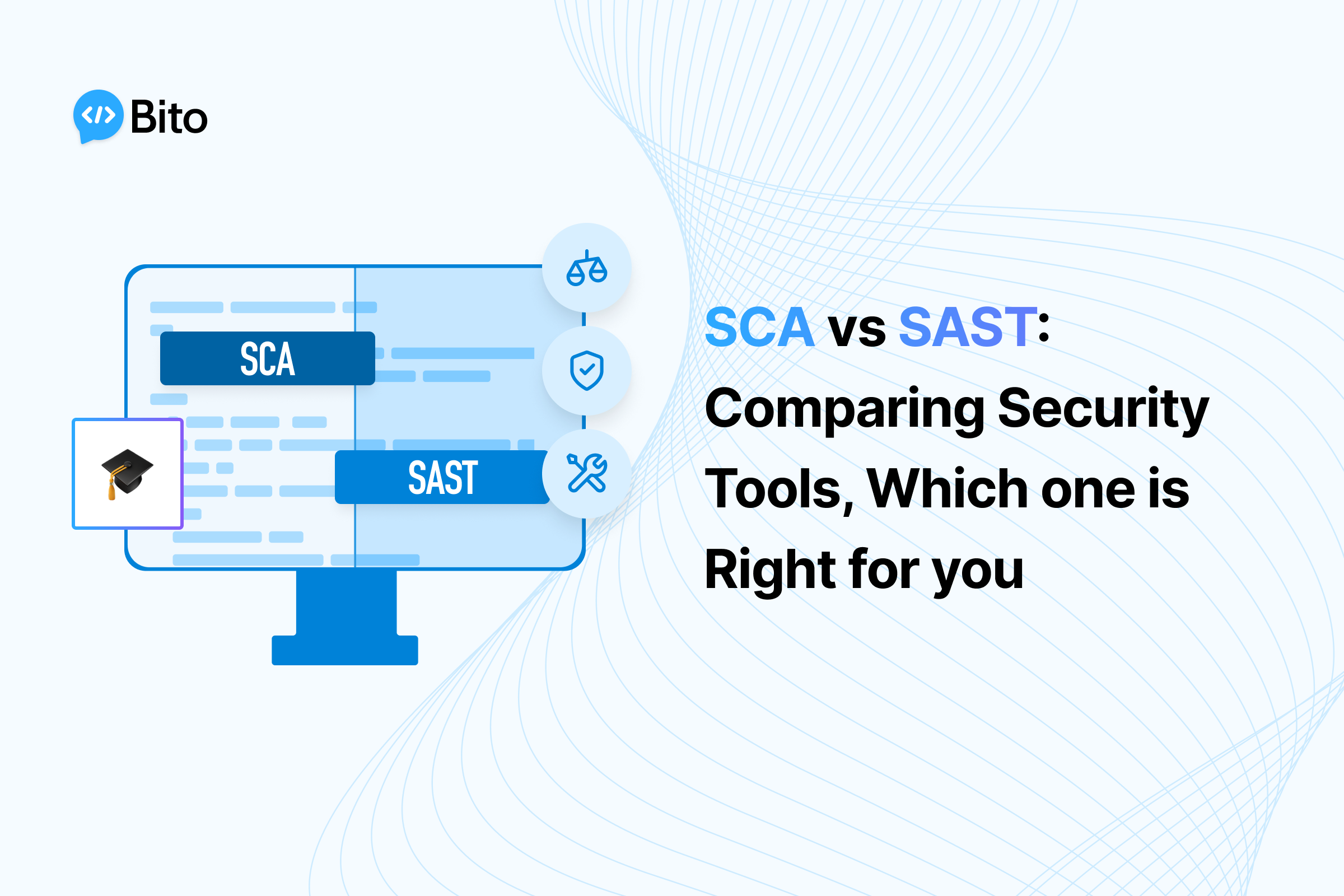Software applications have become increasingly complex and interconnected in recent years, making application security more crucial than ever. As modern applications rely more on open source code and services, multiple testing tools are often needed to fully analyze potential security risks.
Two of the most common types of application security testing are static application security testing (SAST) and software composition analysis (SCA). These take complementary approaches to identifying vulnerabilities in custom code versus third-party dependencies. Understanding the key differences between SAST and SCA can help organizations determine when to use each and how they can work together for robust application security.
Introduction
Application security is a broad field encompassing a range of practices and tools for finding and fixing vulnerabilities in software. As applications grow more complex with intricate dependencies and integration points, it becomes challenging for organizations to maintain full visibility into security risks. No single tool can catch every issue, so a layered approach using multiple testing techniques is recommended.
Two of the most widely used application security testing methods are SAST and SCA. At a high level:
- SAST analyzes proprietary source code for security flaws
- SCA identifies known vulnerabilities in third-party dependencies
While related, these two approaches focus on different parts of the software stack. SAST looks inward at custom code written in-house, while SCA looks outward at the open source components leveraged in the application. Used together, they can provide comprehensive coverage of both custom code and dependencies.
In this article, we will compare SAST and SCA, when to use each, and how they can work together as part of a robust application security strategy. Properly understanding these tools is key for organizations looking to release secure software and prevent vulnerabilities from being exploited.
Key Differences Between SAST and SCA
While SAST and SCA both aim to identify application security issues, there are several key differences between these two types of testing:
Code Scope
- SAST analyzes an organization’s proprietary source code for security flaws. It focuses on code developed in-house by the organization’s own developers and any vulnerabilities that may arise from coding mistakes or unsafe practices.
- SCA scans applications to detect vulnerabilities stemming from open source components and third-party libraries. The focus is on published or known vulnerabilities in dependencies.
Input Required
- SAST requires access to source code in order to analyze it. Languages commonly supported include Java, C/C++, C#, PHP, Python, JavaScript, and others.
- SCA can work with compiled binary code. The tool detects the open source components present rather than relying on source code access.
Capabilities
- SAST can find general coding flaws like SQL injection, cross-site scripting (XSS), insecure data exposure, insufficient input validation, and more security antipatterns. It focuses on code-level weaknesses.
- SCA matches against published vulnerability databases to find known CVEs and exposures in third-party libraries. It focuses on known dependency risks.
Remediation
- To fix issues found by SAST, developers typically need to modify application source code to remediate the vulnerabilities. This may involve refactoring unsafe functions, adding validation, updating insecure configurations, etc.
- For SCA findings, remediation often involves upgrading the dependency to a newer fixed version or replacing the risky component with a more secure alternative. The code itself does not need to be changed.
When Used
- SAST is generally used earlier in the software development lifecycle, as it can give developers rapid feedback on potential code vulnerabilities to fix during initial development.
- SCA tends to be used later, before release, as a final check for any vulnerability risks introduced through dependencies and third-party integrations.
When to Use SAST
SAST is most applicable when analyzing custom source code written in-house by your own developers. Some examples of good use cases for SAST include:
- Analyzing proprietary code: As SAST focuses on custom code, it is very useful for analyzing source code developed internally by your team rather than third-party libraries. This allows you to find and remediate any vulnerabilities in your organization’s own code.
- Finding common weakness types: SAST can detect a wide range of known vulnerability types such as code injection, insecure data handling, race conditions, incorrect access controls, and more. These coding flaws can arise even in mature codebases.
- Getting rapid feedback: One of SAST’s major advantages is it can scan source code early on and provide rapid feedback to developers on potential issues to fix. This fits with the shift left approach of finding flaws as early as possible.
- Pinpointing locations: SAST can identify the exact location of a vulnerability within the source code, including file name and line number. This helps developers remediate the issue quickly.
Some examples of where SAST is commonly used:
- Scanning source code during development and testing phases
- Integrating into continuous integration pipelines
- Analyzing custom code before public release or production deployment
Overall, SAST works well for highlighting issues in proprietary code at a granular level so developers can rapidly iterate and improve security.
// Example of an SQL injection flaw
Statement statement = connection.createStatement();
statement.executeQuery("SELECT * FROM users WHERE name = '" + inputName + "'");
A SAST scan would flag the unvalidated `inputName` as a security risk for SQL injection. The developer can then refactor to parameterize the query properly:
PreparedStatement statement = connection.prepareStatement("SELECT * FROM users WHERE name = ?");
statement.setString(1, inputName);
When to Use SCA
SCA is extremely valuable for analyzing third-party open source dependencies used within an application. Some examples of recommended use cases include:
- Managing open source usage: SCA gives full visibility into dependencies and licenses, allowing better open source governance.
- Identifying CVEs: By matching against databases like NVD and GitHub Advisory Database, SCA can rapidly find vulnerabilities stemming from third-party code.
- Enforcing policies: Organizations can use SCA to block use of dependencies with unacceptable risks or licenses based on configured policy rules.
- Generating SBOMs: Software bill of materials provided by SCA helps with tracking inventory and sharing dependency information.
- Release readiness check: Running SCA as a final check before major releases can identify high risk dependencies needing upgrade.
Common places where SCA can be deployed:
- Within continuous delivery pipelines to fail builds on high severity findings
- GitHub workflows for automated dependency analysis
- Docker builds to analyze images for OS and library risks
- Release gates before production deployment
Overall SCA delivers great value for understanding and acting on risks introduced through third-party code usage.
// Example SCA report snippet
{
"library": "handlebars",
"version": "4.3.5",
"vulnerabilities": [
{
"id": "GHSA-qqgx-2p2h-9m66",
"title": "Prototype Pollution",
"severity": "high",
"link": "https://github.com/advisories/GHSA-qqgx-2p2h-9m66"
}
]
}
Here SCA identifies a prototype pollution vulnerability in Handlebars v4.3.5 via the GitHub Advisory Database. The developer can upgrade to v4.7.7 or later to resolve.
Using SAST and SCA Together
When used together, SAST and SCA can provide comprehensive coverage for application security:
- SAST for custom code Use SAST to analyze proprietary code during development for fastest feedback on vulnerabilities.
- SCA for dependencies: Use SCA later in pipelines to catch any risks from dependencies before release.
- Automated testing: Integrate both SAST and SCA into CI/CD pipelines for automated scanning on every code change.
- Layered security: Apply SAST earlier on code, SCA later on dependencies for layered security.
- Consolidated reporting: Merge findings from SAST and SCA for a single view of all application risks.
- Fix flaws early, upgrade dependencies late: SAST encourages fixing code issues early. SCA helps intelligently upgrade risky dependencies later on based on severity.
- Organizations should use SAST and SCA in a complementary fashion based on their strengths. SAST offers inward visibility on custom code quality earlier on. SCA provides outward visibility on dependencies nearer to release. Together they offer comprehensive security testing.
Conclusion
SAST and SCA take different but complementary approaches to application security testing. SAST analyzes proprietary source code for flaws like injection attacks and data exposure risks. SCA scans dependencies for known published vulnerabilities. Using SAST and SCA together provides broad coverage of both custom code and third-party libraries. Organizations should integrate these tools into their software development lifecycle to automatically find and fix vulnerabilities as early as possible.
By understanding these two types of testing and when each is most appropriate, engineering teams can make applications far more secure. SAST offers inward visibility for custom code. SCA provides outward visibility for dependencies. Used together, they are indispensable tools for modern application security.






